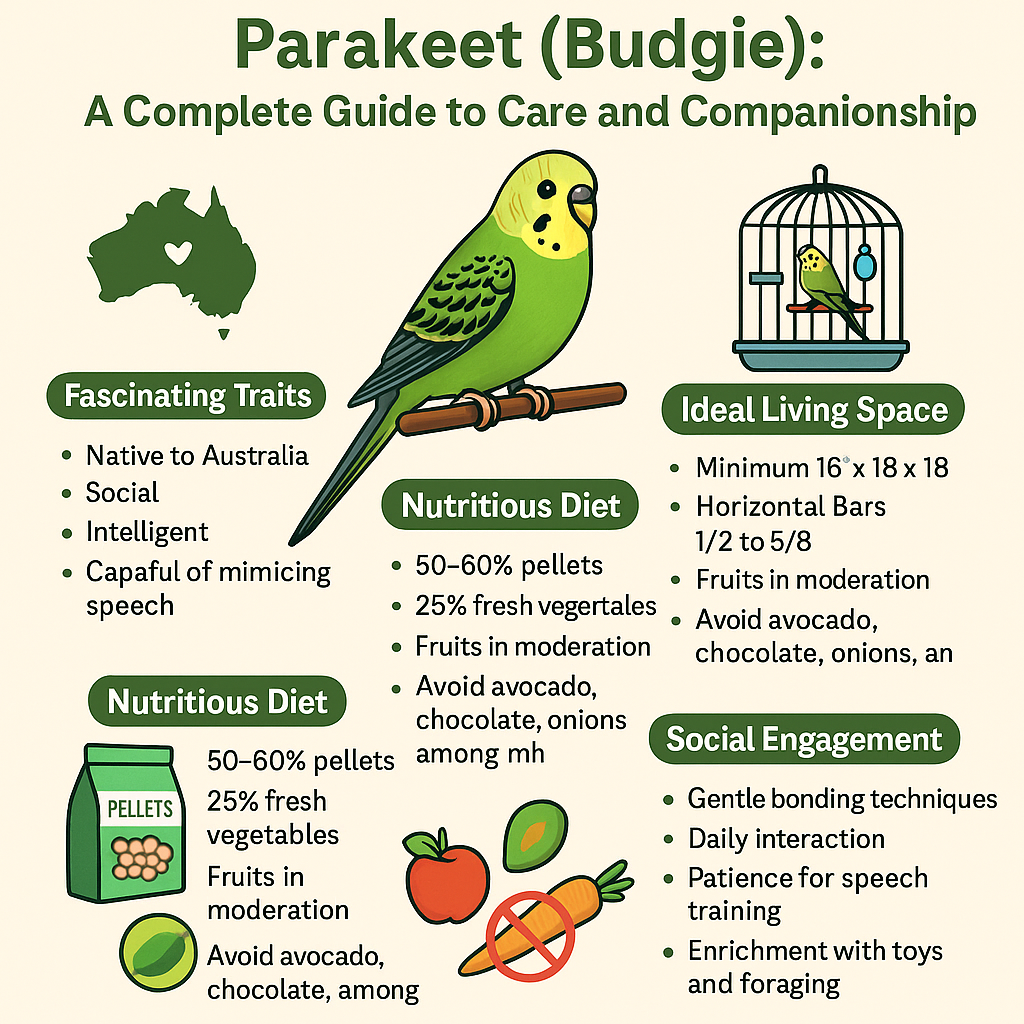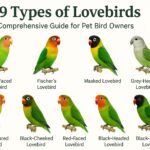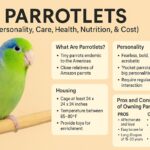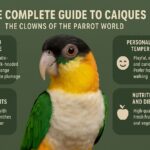Budgerigars, commonly known as budgies or parakeets, are among the most popular pet birds around the world. These small, colorful birds are native to Australia and have won the hearts of bird enthusiasts with their playful personalities and ability to mimic human speech. This guide covers everything you need to know about caring for these feathered companions, from their dietary needs to housing requirements, health considerations, and training techniques.
Understanding Budgies: Origins, Traits, and Behavior
Budgies are vibrant, inquisitive parakeets that originate from Australia. In the wild, they form large flocks that fly across vast stretches of grassland in search of food and water. These social creatures have been kept as pets for over 150 years, charming people with their intelligence and entertaining antics.
These small birds typically measure between 6-8 inches in length and weigh about 1-1.5 ounces. Their natural coloring is predominantly green with black markings on their wings, back, and throat, though years of selective breeding have produced budgies in various colors, including blue, yellow, white, and gray.
Budgies are quite social by nature and thrive on interaction. They form strong bonds with their owners and can even learn to mimic human speech with patient training. Their intelligence makes them excellent companions for those willing to invest time in their care and enrichment.
Their lifespan varies considerably between different types. Wild-type budgies typically live between 8-12 years when properly cared for, while English budgerigars (a larger variety bred for showing) tend to have shorter lifespans of about 7-9 years. With proper diet, housing, and veterinary care, some budgies have been known to live even longer.

Budgie Cage Setup and Ideal Home Conditions
Choosing the Right Cage for Your Budgie
When it comes to housing your budgie, bigger is always better. Though these birds are small, they need space to fly, play, and exercise. The cage should be wide rather than tall, as budgies fly horizontally rather than vertically.
At minimum, a cage for a single budgie should be 18 inches in length, 18 inches in width, and 18 inches in height, though larger is preferable.
Bar spacing is important- gaps between 1/2 to 5/8 inches are ideal to prevent escape while allowing your budgie to climb safely. The cage should include multiple perches of varying diameters to exercise your bird’s feet and prevent foot problems.
Place the cage in a location that’s active enough for social interaction but away from drafts, direct sunlight, and kitchen fumes. Avoid placing the cage near windows where predators like neighborhood cats might cause stress by appearing suddenly.
Essential Cage Components
Every budgie cage should include:
- Food and water dishes that are cleaned and refilled daily
- Multiple perches made of natural wood, when possible
- Toys for mental stimulation and physical activity
- A cuttlebone or mineral block for calcium and beak maintenance
- A shallow dish for bathing (offered several times weekly)
Avoid using sandpaper covers on perches as these can cause foot injuries. Instead, natural wooden perches of varying diameters provide better foot exercise.
Cleaning Schedule
Maintaining a clean environment is crucial for your budgie’s health. Daily tasks should include:
- Replacing food and water
- Removing obvious debris and droppings
- Wiping down soiled surfaces
Weekly cleaning should be more thorough:
- Changing cage liner or substrate
- Washing and disinfecting food and water containers
- Cleaning perches and toys
Monthly deep cleans involve taking the cage apart and thoroughly cleaning all components with bird-safe disinfectants.
What to Feed Your Parakeet?
A Balanced Diet
Proper nutrition is the foundation of your budgie’s health. Rather than relying solely on seeds, modern avian veterinarians recommend a diet based primarily on high-quality commercial pellets, supplemented with fresh vegetables, some fruits, and a limited amount of seeds.
A balanced budgie diet should include:
- 50-60% high-quality pellets (brands like Harrison’s, Zupreem, or Roudy Bush)
- 25% fresh vegetables and leafy greens
- 15-25% seed mix specifically formulated for budgies
- Occasional fruits as treats (once weekly)
Pellets provide consistent nutrition without allowing the bird to selectively eat only their favorite components. Seeds, while enjoyed by budgies, are high in fat and should be limited to prevent obesity.
Fresh Foods
Fresh vegetables are essential to your budgie’s diet. Good options include:
- Dark leafy greens like kale, spinach, and collard greens
- Carrots and sweet potatoes
- Broccoli and cauliflower
- Squash and zucchini
- Celery
Fruits should be offered sparingly due to their sugar content. Safe options include apples (without seeds), bananas, and melons. All fresh foods should be thoroughly washed and cut into manageable pieces.
Foods to Avoid
Several common foods are toxic to budgies and should never be offered:
- Avocado
- Chocolate
- Caffeine
- Alcohol
- Onions and garlic
- Fruit seeds and pits
- Rhubarb
- Lettuce (provides little nutrition and can cause diarrhea)
Always research new foods before introducing them to your budgie’s diet.
Feeding Techniques
Food should be replaced daily, even if it appears untouched. Budgies can be notoriously picky eaters, especially when trying new foods. For reluctant eaters, try these techniques:
- Attach leafy greens to the cage bars with bird-safe clips
- Offer new foods first thing in the morning when birds are hungriest
- Eat the same foods in front of your budgie (they’re social eaters)
- Try different preparations (chopped, grated, whole)
For birds that strongly prefer seeds, transition products like Lafeber Nutriberries or Harrison’s High Potency Mash can help bridge the gap to a healthier diet.
Budgie Health Care: Common Issues and Signs of Illness
Common Health Issues
Being familiar with common budgie health problems can help you catch issues early. Watch for:
- Respiratory infections – signs include tail bobbing, labored breathing, and sitting on the cage floor
- Mites – particularly on the face and feet
- Feather picking or destruction
- Weight loss or poor appetite
- Overgrown beak or nails
- Egg binding in females (even without a male present)
One useful way to monitor your budgie’s health is by observing their droppings. Normal droppings have a dark fecal portion (larger) and a white urate portion. Changes in the ratio or consistency warrant veterinary attention.
Signs of a Healthy Budgie
A healthy budgie will display:
- Bright, alert eyes
- Clean, smooth feathers (except during molting)
- Active, playful behavior
- Steady breathing without tail bobbing
- Regular eating and drinking
- Normal droppings
Regular check-ups with an avian veterinarian are recommended, even when your budgie appears healthy. These professionals can spot subtle signs of illness that might otherwise go unnoticed.
Social Behavior and Training
Social Needs
Budgies are extremely social birds that thrive on companionship. In the wild, they live in large flocks, and this social nature remains strong in pet budgies. They need daily interaction, whether with human family members or other budgie companions.
Many owners choose to keep budgies in pairs to provide constant companionship, especially if the family is away during the day. When introducing new birds, do so gradually to prevent territorial conflicts.
Building Trust
Establishing trust is the foundation of a good relationship with your budgie. Start with these steps:
- Speak softly around the cage before attempting physical interaction
- Offer treats from your hand once the bird seems comfortable with your presence
- Be patient and consistent – trust builds gradually
- Never grab or force interaction
Once your budgie is comfortable taking treats from your hand, you can begin more advanced training.
Speech Training
Budgies are capable of learning to mimic human speech, though their vocabulary is typically smaller than larger parrots. Male budgies generally learn to speak more readily than females. For speech training:
- Choose simple words or phrases to start
- Repeat the same word or phrase during daily training sessions
- Train in a quiet environment with minimal distractions
- Reward progress with treats and praise
- Be patient – learning takes time
Some budgies can develop vocabularies of dozens of words with consistent training.
Basic Training Techniques
Beyond speech, budgies can learn various tricks and commands:
- Step-up training: Teaching your budgie to step onto your finger
- Towel training: Accustoming your bird to being wrapped gently in a towel (useful for health checks)
- Target training: Teaching your budgie to touch a specific object with its beak
- Recall training: Teaching your bird to come when called
Training sessions should be brief (5-10 minutes) but consistent, ideally occurring daily.
Budgie Enrichment: Toys and Activities for Mental Health
Toy Selection
Proper toys are essential for keeping budgies mentally stimulated and physically active. Rotate toys regularly to maintain interest. Good toy options include:
- Chewable items made from untreated wood, cardboard, or paper
- Bells and noise-making toys
- Puzzle toys that dispense treats
- Swings and ladders
- Mirrors (use sparingly as some birds become obsessed)
Avoid toys with small parts that could be swallowed or those made with toxic materials like lead or zinc.
Foraging Opportunities
In the wild, budgies spend much of their day searching for food. Recreate this natural behavior by:
- Hiding treats in specially designed foraging toys
- Creating simple foraging toys from egg cartons or paper rolls
- Using treat dispensers that require manipulation to release food
- Hanging vegetables or fruits in different locations
These activities provide both mental stimulation and physical exercise.
Budgie Breeding Guide: What New Owners Should Know
Breeding Basics
Breeding budgies requires careful planning and preparation. Budgies typically reach breeding age around 6 months, though waiting until they’re at least 10-12 months old is advisable.
There are two main breeding approaches:
- Colony breeding – allowing birds to select their own mates in an aviary setting
- Cage breeding – pairing specific birds together in breeding cages
Colony breeding might seem more natural, but it’s actually more challenging to manage. Cage breeding offers better control over which birds pair together.
Nesting Requirements
Breeding budgies need:
- A proper nest box (typically wooden)
- Clean nesting material
- Increased calcium in their diet
- Extra protein sources
- Privacy and reduced stress
Budgies are generally tolerant parents and will allow handling of chicks from hatching day, though this should be done carefully and minimally.
Special Considerations
Breeding comes with special challenges:
- Females can become egg-bound, requiring veterinary intervention
- Some pairs may abandon or harm their chicks
- Genetic issues can arise from improper pairing
- Extra nutritional demands are placed on breeding birds
For these reasons, breeding should only be attempted by those with experience and resources to properly care for the resulting offspring.
Conclusion
Budgies offer remarkable companionship in a small package. Their intelligence, sociability, and relatively straightforward care requirements make them excellent pets for both novice and experienced bird keepers. With proper diet, housing, socialization, and healthcare, these colorful companions can bring joy and entertainment to your home for many years.
Whether you’re drawn to budgies for their beautiful colors, charming personalities, or potential for learning tricks and speech, understanding their needs is essential to providing them with a fulfilling life. By creating an environment that supports their physical, mental, and social requirements, you’ll enjoy a rewarding relationship with one of nature’s most charismatic small birds.
- Parrotlets (Personality, Care, Health, Nutrition, & Cost) - June 20, 2025
- Caique (Personality, Care, Health, & Nutrition) - June 20, 2025
- The Complete Guide to Golden Retrievers - June 9, 2025














